Nature Now! Popular, but Not Poplar
For immediate release ‐ May 21, 2020
Nature Now
Contact: Jessica Wackes, 919.707.9850. Images available upon request
Yes, you read that right! One of our most popular trees is not a poplar tree, although that is a popular name for one that is not a poplar!
Liriodendron tulipifera is commonly called a tulip poplar, yellow poplar or tulip tree among other names. Tulip tree would be a more correct common name as this species is in the magnolia family and is not a poplar! We do have poplar trees in North Carolina such as the Eastern cottonwood, Populus deltoides, but they are not as well-known or popular as the tulip tree. All this fuss about a tree’s name is just a humorous distraction from this grand tree!
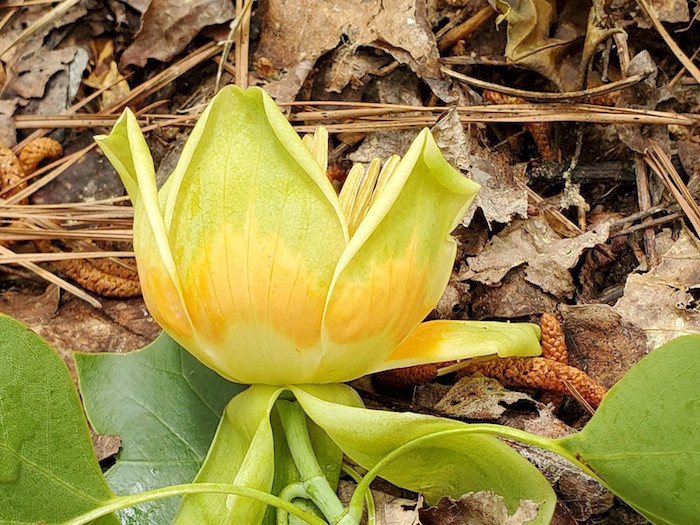
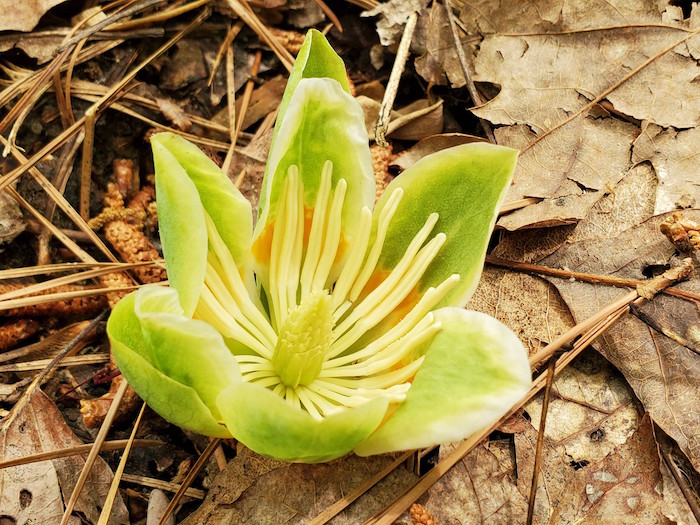
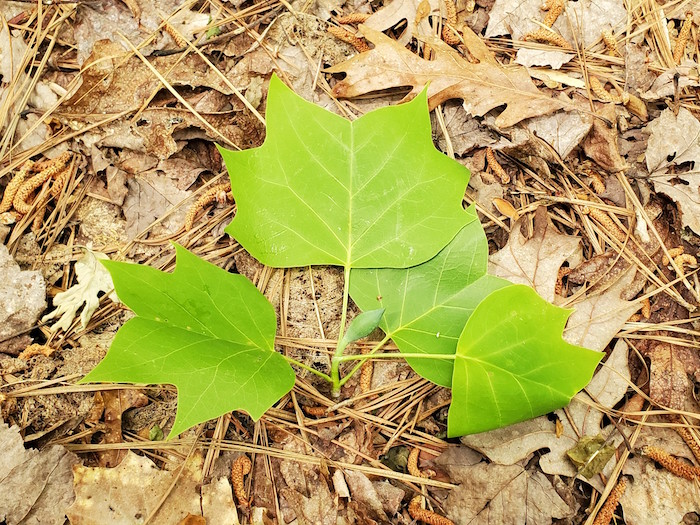
The tulip tree is relatively easy to recognize. With some practice you can learn to identify this tree by its bark, but it is far easier to identify by its leaf and flower. The flowers are large, beautiful tulip-like flowers. Even the leaves look like cross-sections of tulip flowers. You usually can find these without risking getting a crick in your neck from looking up. The large flowers often litter the forest floor as they break off during our spring rain storms. Decorate the forest floor is probably a better way to say it, as their colorful flowers provide welcome relief from the brown carpet of dead leaves. The flowers are loaded with nectar, which attracts many insect pollinators. The tulip tree is a popular host plant for some moth species and is the sole host for the tulip tree silkmoth, Callosamia angulifera. The tree is also a very prolific seed producer providing food for many birds and mammals.
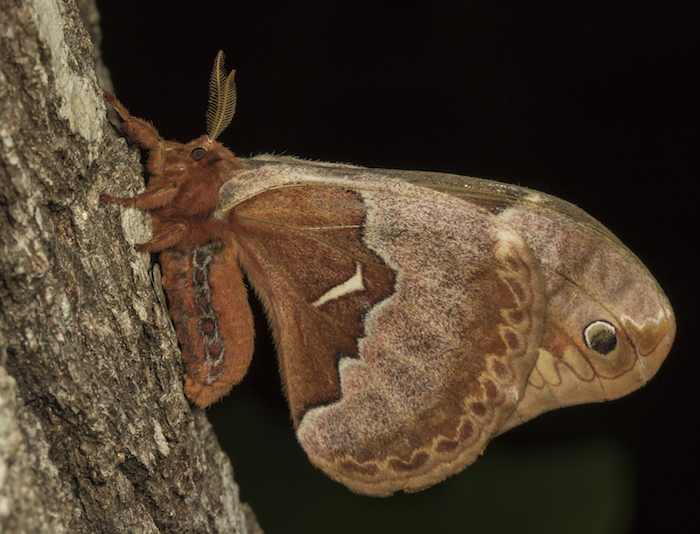 Tulip tree silk moth. Photo: Mike Dunn.
Tulip tree silk moth. Photo: Mike Dunn.
The tulip tree is widely distributed throughout eastern North America and can be found in most mixed hardwood forests in North Carolina. If you have a hardwood forest near you, then you probably have tulip trees near you too. I see them every time I look out my kitchen window. They seem to be especially common along stream bottoms, where they usually stand out as the largest trees in the forest.
Did I mention that these trees get large? If you see a very large tree on a stream slope or bottom, then it probably is a tulip tree. These fast growers commonly reach heights of 100 feet and diameters of 3-4 feet. A great place to see some very large tulip trees with six-foot diameters is Joyce Kilmer Memorial Forest just west of Robbinsville, North Carolina. This rich mountain cove forest was spared the lumberman’s axe and a short loop trail will give you an idea of the grandeur of our original forests. Tulip trees have been known to reach almost 200 feet high with diameters of 8 to 10 feet! The tallest known tulip tree now is one in the Smoky Mountains of North Carolina with a measured height of 191.9 feet. There are scattered large trees that have survived even in urban areas such as Raleigh. The National Champion Tulip Tree is in Chesapeake, Virginia, with a diameter over 10 feet! This huge tree is hollow but still very much alive.
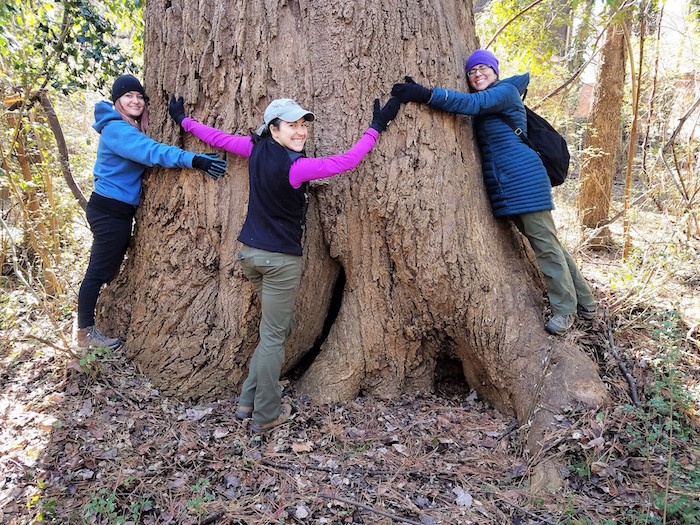
Please go explore some woods near you and see if you can find the tulip tree. If you go out now, you may find some of their flowers at your feet ready for some adoring appreciation. If you find a particularly large tree, please go give it a “big tree hug”! That is a popular thing for big-tree lovers to do!
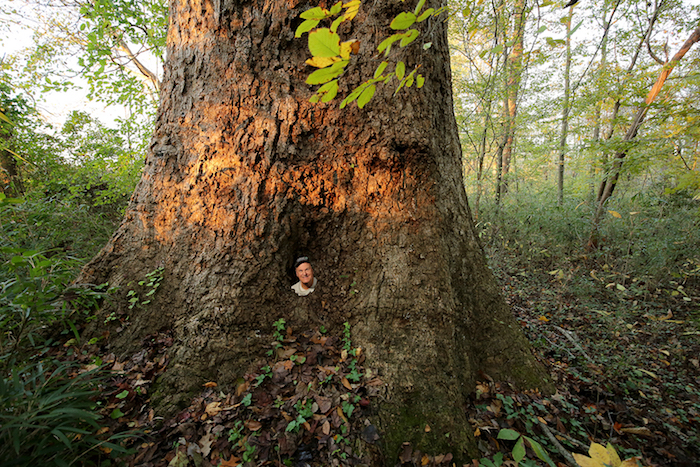 Co-nominator Gary Williamson inside the National Champion Tulip Tree in Chesapeake, Virginia. Photo: Todd Pusser.
Co-nominator Gary Williamson inside the National Champion Tulip Tree in Chesapeake, Virginia. Photo: Todd Pusser.
By Jerry Reynolds, Head of Outreach
For more information about our upcoming activities, conservation news and ground-breaking research, follow @NaturalSciences on Instagram, Twitter and Facebook. Join the conversation with #visitNCMNS.

